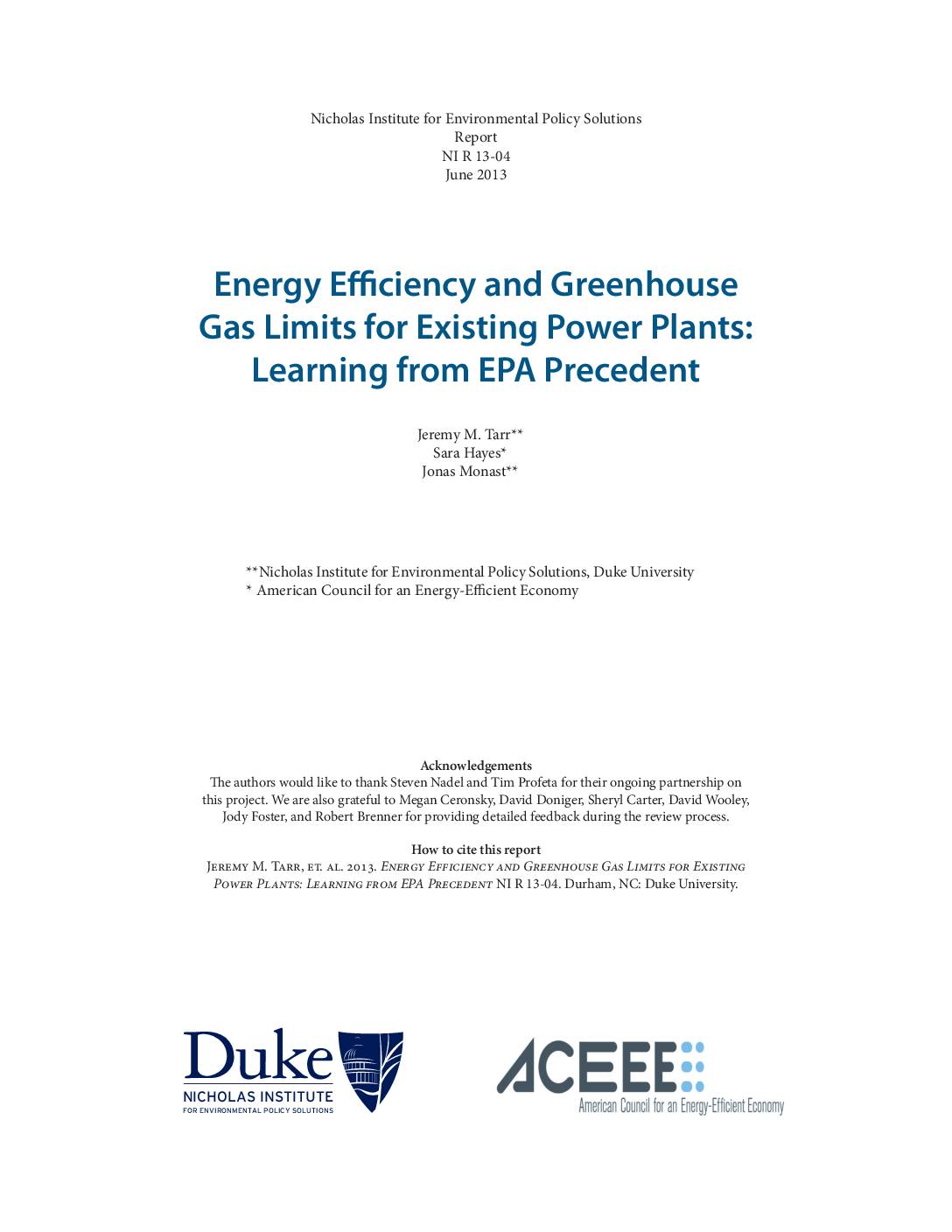In April 2012, the U.S. Environmental Protection Agency (EPA) proposed a new source performance standard (NSPS), limiting carbon dioxide (CO2) emissions from new fossil fuel–fired electric generating units (EGUs). Under Section 111(d) of the Clean Air Act (CAA), the EPA and state governments will also have responsibility for regulating CO2 emissions from existing EGUs. Faced with the task of implementing greenhouse gas regulation systems, regulators have been presented with a wide array of challenges which will be increasingly complicated by broad statutory language and a host of legal uncertainties.
In order to formulate and adopt an effective regulatory scheme for greenhouse gases it will be necessary to draw upon EPA precedent to maintain regulatory consistency. End-use energy efficiency has been employed previously in similar situations as a means to help negotiate the various pitfalls intrinsic in the formulation of emissions regulations. In this analysis several previously adopted EPA programs are examined in order to provide an understanding of the potential inclusion of end-use energy efficiency as a 111(d) compliance option. In the coming sections key issues regarding the role of end-use energy efficiency under Section 111(d) will be identified to delineate the CAA rules and regulations relevant to EPA and state evaluations.
Share this

Sectors: Cross cutting, Industry, Renewables
Country / Region: Northern America, United States
Tags: carbon, carbon dioxide, cleaning, climate relevant regulations, emissions, energy, energy efficiency, fossil energy, greenhouse gas emissions, nature protection, performance standards, protection, rules and regulationsKnowledge Object: Publication / Report
Published by: ACEEE
Publishing year: 2013
Author: Sara Hayes, Jeremy Tarr, Jonas Monast
